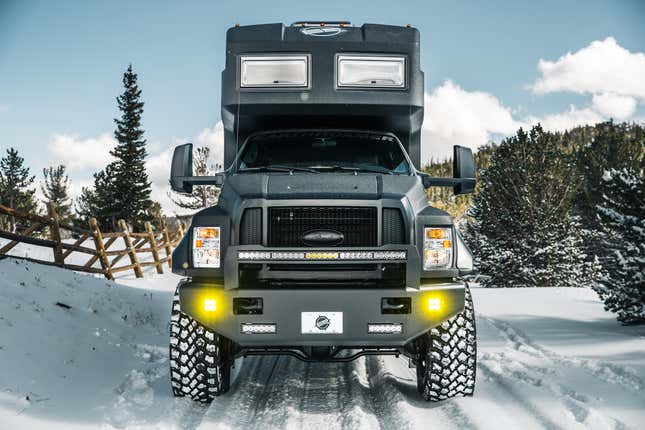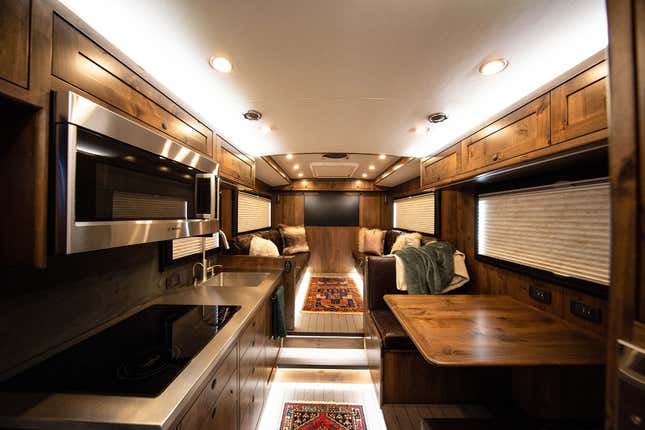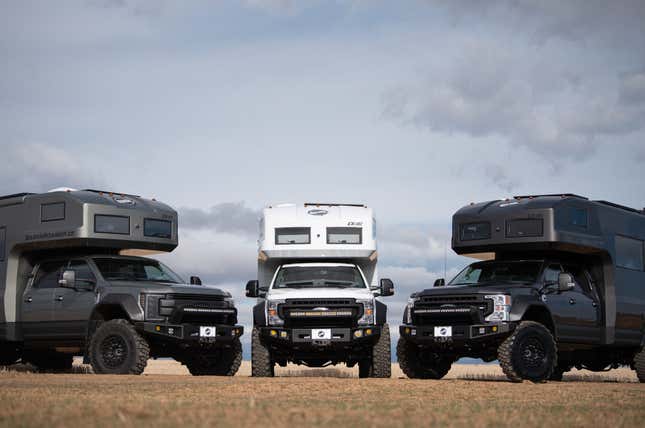Clearly, overland and off-road vehicles are getting a lot of attention right now. These machines are riding a wave of popularity that’s looked like it’s about to crest for a couple of years now, only to surge higher. Well, it’s happened again because the growth of the overland and off-road segment has blown past expectations and shows no signs of letting up any time soon.
Bloomberg cites research that says the RV industry, which now accounts for recreational off-road vehicles, too, will see double-digit growth this year and through the next. Industry specialists tell Bloomberg the sales of overland equipment will be making as much money as once believed was only possible until 2027, by the end of 2023. More or less. And it’s all because rich people are getting into the hobby. Yes, the glampers are coming, per Bloomberg:
Eli Kogan isn’t the type you’d imagine would buy a giant, wildly modified automobile that can survive a rugged off-road trek. The clean-cut 27-year-old entrepreneur likes things powerful but tidy: He owns modern and vintage Porsches as well as Ducati bikes designed for the track. He founded and operates the exclusive Otto Car Club in Scottsdale, Ariz., where members discuss art and wine next to their Lamborghini Aventadors and Ferrari F50s.
These well-heeled enthusiasts are bringing their EarthRoamers and EarthCruisers on the trail, which reportedly get into stratospheric price points.

Here I thought regular RVs were bad, but these overlanders are more of the same:
From Malibu to Montauk, educated and affluent consumers are reorganizing their free time around so-called overlanding, traveling in comfort toward the embrace of the great outdoors. The surge of their interest and cash has transformed the formerly humble backcountry into a playground for six-figure rigs kitted out with thousands of dollars of glamping “necessities.”
Just for fun, (sure, fun) I pulled up the median household incomes of Malibu, California and Montauk, New York. In 2019, these were around $151,000 and $101,000 respectively. Contrast those numbers to the same stat of the U.S. as a whole, which was $69,560, and you’ll get an idea of why it’s rich people that are behind the latest overland and off-road craze.
To be fair, everything is getting expensive. The average price of new cars is up. Gas, food, energy. Used cars prices have fallen off a cliff and promptly sprouted wings, so that the same Craigslist ads you’d have seen around $2,000-3000 before the pandemic are now FIRM $5000-6,000 listings. It’s wild out there.

But this glamping craze and its correspondent price points irk me because going outdoors is about striking a balance between discomfort and tranquility in an inherently uncomfortable setting. Driving off-road and off-grid is best done as an ascetic exercise. Think of Thoreau and Walden, or McCandless and Into the Wild (just please don’t eat the wrong plants.) Shout out to Krakauer, too.
That’s why I love seeing DIY and cheaper rigs. Get an old 4Runner, or a newish Ranger like Wes Siler. Build a camper in your garage. Go off-road, but don’t go bankrupt. If anything, we know that fads can be traced like a pendulum.
Eventually, there will be a reactionary movement away from these expensive machines, and toward pared-down “pure” overlanders. For us mere mortals, who can’t dream of buying an off-roader that costs more than a house, it means we’re ahead of the curve. Keep your shitbox; it’s really all the rig you need.
